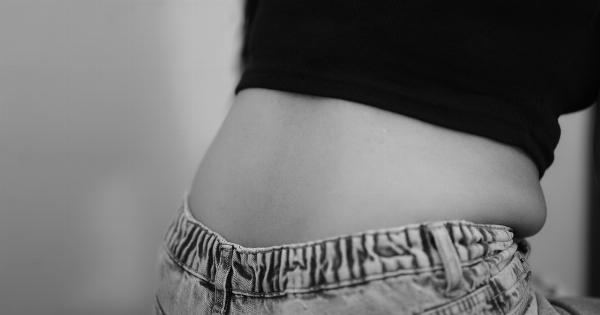Urinary incontinence is a common condition that affects millions of people worldwide. It refers to the involuntary loss of urine, leading to social embarrassment and potential health complications.
There are several types of urinary incontinence, each with its own causes and treatment options. Understanding the different types of urinary incontinence can help individuals seek appropriate diagnosis and treatment.
This article provides an overview of the various types of urinary incontinence, as well as the diagnosis and treatment methods available.
1. Stress Incontinence
Stress incontinence is the most common type of urinary incontinence, especially among women. It occurs when physical activities, such as sneezing, laughing, or exercising, put pressure on the bladder, leading to urine leakage.
Weak pelvic floor muscles and sphincter dysfunction are often underlying causes of stress incontinence. Treatment options include pelvic floor exercises, bladder training, and surgical interventions in severe cases.
2. Urge Incontinence
Urge incontinence, also known as “overactive bladder,” is characterized by a sudden, intense urge to urinate, followed by involuntary urine loss.
The condition is usually caused by abnormal bladder contractions or an overactive detrusor muscle. Treatment may involve bladder retraining, medications, nerve stimulation, or use of a urinary catheter in severe cases.
3. Overflow Incontinence
Overflow incontinence occurs when the bladder does not empty completely during urination, causing it to overflow and leading to urine leakage. This is commonly caused by bladder outlet obstruction, weak bladder muscles, or nerve damage.
Treatment options include catheterization to empty the bladder, medications to improve bladder muscle contractions, or surgery to remove blockages.
4. Functional Incontinence
Functional incontinence is a type of incontinence that occurs due to physical or cognitive impairments that make it difficult for individuals to reach the toilet in time. This can be caused by conditions such as arthritis, dementia, or mobility issues.
Treatment involves addressing the underlying cause of the functional impairment, as well as using assistive devices or modifying the environment to improve accessibility.
5. Mixed Incontinence
Mixed incontinence refers to a combination of two or more types of urinary incontinence, most commonly stress and urge incontinence.
This can make the condition more challenging to manage and may require a multi-faceted treatment approach, including a combination of medications, bladder training, and surgical interventions.
6. Neurogenic Incontinence
Neurogenic incontinence occurs when there is nerve damage or dysfunction that disrupts the normal communication between the brain, spinal cord, and bladder.
Conditions such as spinal cord injuries, multiple sclerosis, or Parkinson’s disease can lead to neurogenic incontinence. Treatment may involve medications, intermittent catheterization, or surgical interventions to restore bladder function.
7. Postpartum Incontinence
Postpartum incontinence is a temporary form of urinary incontinence that affects some women during pregnancy or after childbirth.
The increased weight and pressure on the pelvic floor muscles, as well as hormonal changes, can contribute to urine leakage. Pelvic floor exercises and lifestyle modifications are typically recommended as initial treatment options.
8. Reflex Incontinence
Reflex incontinence occurs due to a dysfunctional reflex between the bladder and the brain. Individuals with reflex incontinence may have no warning signs or sensations before urine leakage.
This form of incontinence is commonly associated with spinal cord injuries or damage. Management may involve intermittent catheterization, medications, or surgical interventions.
9. Temporary Incontinence
Temporary incontinence can be caused by various factors, such as urinary tract infections, certain medications, constipation, or even consuming irritating foods and beverages.
Once these underlying causes are addressed, the incontinence typically resolves. Treatment may involve antibiotics for infections, adjusting medication regimens, or dietary modifications.
10. Iatrogenic Incontinence
Iatrogenic incontinence refers to urine leakage or incontinence caused by medical treatments or procedures. Certain surgeries, such as prostate or pelvic surgery, may lead to temporary or permanent urinary incontinence.
Nerve-sparing surgical techniques and pelvic floor rehabilitation exercises can help reduce the risk or severity of iatrogenic incontinence.
Diagnosis of Urinary Incontinence
Diagnosing urinary incontinence involves a comprehensive evaluation of an individual’s symptoms, medical history, physical examination, and various diagnostic tests. Healthcare professionals may conduct the following:.
- Medical history review: The healthcare provider will inquire about symptoms, their severity, and potential triggers.
- Physical examination: This may include a pelvic exam to assess muscle tone and any abnormalities in the pelvic organs.
- Bladder diary: Keeping track of urinary habits and patterns can provide valuable information for diagnosis.
- Urinalysis: A urine sample is analyzed to check for signs of infection, bladder stones, or other abnormalities.
- Cystoscopy: This procedure involves using a thin tube with a camera to examine the bladder and urethra for any abnormalities.
- Urodynamic testing: These tests measure bladder and urethra function, including pressure measurements during filling and emptying.
- Imaging tests: X-rays, ultrasounds, or magnetic resonance imaging (MRI) may be used to visualize the urinary tract and detect any structural abnormalities or obstructions.
Treatment Options for Urinary Incontinence
Treatment for urinary incontinence depends on the underlying cause, type, and severity of the condition. Here are some common treatment options:.
Lifestyle Modifications and Behavioral Therapy:
Bladder training, scheduled voiding, and pelvic floor exercises (Kegels) are often recommended as initial management strategies. Avoiding bladder irritants such as caffeine, alcohol, and spicy foods can also help alleviate symptoms.
Medications:
There are various medications available to treat urinary incontinence, including anticholinergics, alpha-blockers, and topical estrogen for postmenopausal women.
These medications help relax the bladder muscles, reduce overactive bladder contractions, or strengthen the pelvic floor muscles.
Pessaries and Supportive Devices:
Pessaries are removable devices inserted into the vagina to support the bladder and reduce stress incontinence symptoms.
Other supportive devices, such as urethral inserts or external collection devices (urinary pads), can also aid in managing urine leakage.
Medical Procedures and Interventions:
In severe cases, medical procedures or surgical interventions may be necessary.
These can include the placement of a midurethral sling to support the urethra, botulinum toxin injections to relax an overactive bladder, or nerve stimulation procedures to modulate bladder function.
Conclusion
Urinary incontinence can significantly impact an individual’s quality of life and overall well-being; however, there are various treatment options available to manage and treat the condition.
Seeking a proper diagnosis and understanding the different types of urinary incontinence are crucial steps in determining the appropriate treatment approach. By working closely with healthcare professionals, individuals can regain control over their bladder function and enjoy improved quality of life.






























